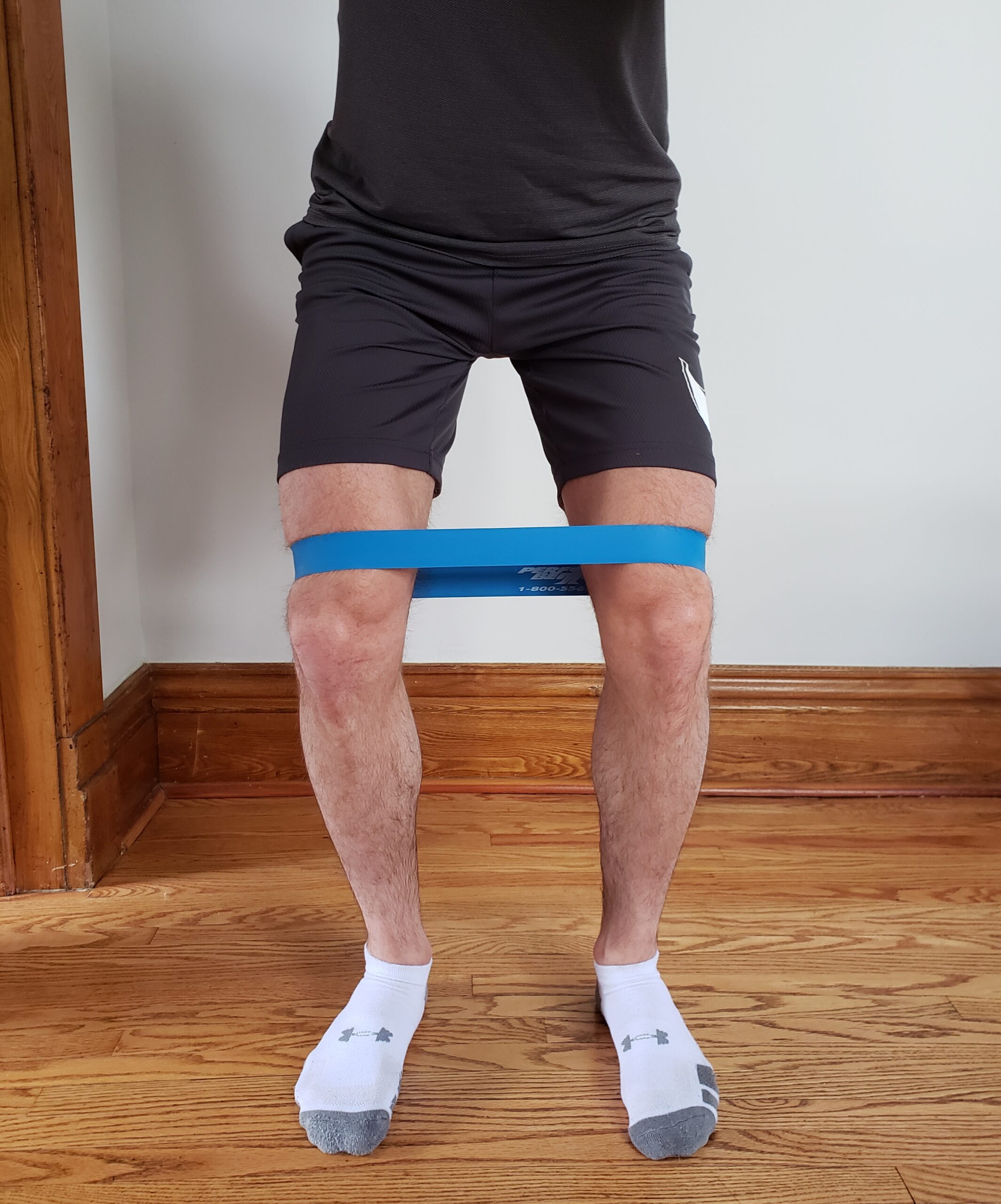Exercise aim -To improve glute med strength and kinetic chain control
***Note: These are not recipe exercises but rather examples – see your MPT Physiotherapist for an individually tailored, appropriately graded exercise program!
Side Leg Raise
Lie on your unaffected side. You can slightly bend the bottom knee to maintain balance but it is not necessary. Keeping your affected leg straight, slightly extend your hip and raise it to about 30 degrees, then lower, repeat. It is important to make sure you do not open your hips and roll backwards during this exercise. If this occurs you will feel this exercise working the front of your hip – you should feel it working in your butt. Perform 3 sets of this exercise to fatigue (when you feel a burning in your butt).
You can progress this exercise by placing an exercise band around your ankles to increase resistance.

Monster Walks
Place a mini-band around the thighs, just above the knee or around the lower leg near the ankle. Get into an athletic position with knees slightly bent, butt back and back straight. Take a step sideways using your abductors (gluteus medius), without rotating at the hips and keeping toes pointing forwards. Keep the band taut throughout the entire duration of the movement. Repeat 10 steps to the left or right and back. Perform 3 sets of this exercise to fatigue (when you feel a burning in your butt).
You can progress this exercise by increasing band resistance strength.


Single Leg Squat against the Wall
Stand sideways against a wall with your unaffected leg against the wall. Bring the unaffected leg up to approximately 45 degrees hip flexion. Keeping your back straight, slowly sit back as if you are sitting on a barstool behind you to about 30 degrees of knee flexion. During this movement be sure to keep your hip, knee and feet in line and your knee stable. Return to the standing position and repeat. Aim to perform 3 sets of 6-12 reps with good form.
The progression of this exercise is a single leg air squat performed with good alignment.

***Book with MPT today to start your 1 on 1 individually tailored rehab program to get you back to what you love!***
Resources
Brindle, R. A. (2018). Physiological and Biomechanical Factors Contributing to the Hip Adduction Angle in Female Runners (Doctoral dissertation, Drexel University).
Fairclough, J., Hayashi, K., Toumi, H., Lyons, K., Bydder, G., Phillips, N., … & Benjamin, M. (2007). Is iliotibial band syndrome really a friction syndrome?. Journal of Science and Medicine in Sport, 10(2), 74-76.
Fredericson, M., & Wolf, C. (2005). Iliotibial band syndrome in runners. Sports Medicine, 35(5), 451-459.
Fredericson, M., Cookingham, C. L., Chaudhari, A. M., Dowdell, B. C., Oestreicher, N., & Sahrmann, S. A. (2000). Hip abductor weakness in distance runners with iliotibial band syndrome. Clinical Journal of Sport Medicine, 10(3), 169-175.
Tiu, T., & Craig Van Dien, M. D. Knee overuse disorders.
Meardon, S., & Miller, R. H. A new approach to iliotibial band syndrome in runners.
Meardon, S. A., Campbell, S., & Derrick, T. R. (2012). Step width alters iliotibial band strain during running. Sports biomechanics, 11(4), 464-472.
Miller, R. H., Lowry, J. L., Meardon, S. A., & Gillette, J. C. (2007). Lower extremity mechanics of iliotibial band syndrome during an exhaustive run. Gait & posture, 26(3), 407-413.
Nielsen, R. O., Nohr, E. A., Rasmussen, S., & Sørensen, H. (2013). Classifying running‐related injuries based upon etiology, with emphasis on volume and pace. International journal of sports physical therapy, 8(2), 172.


